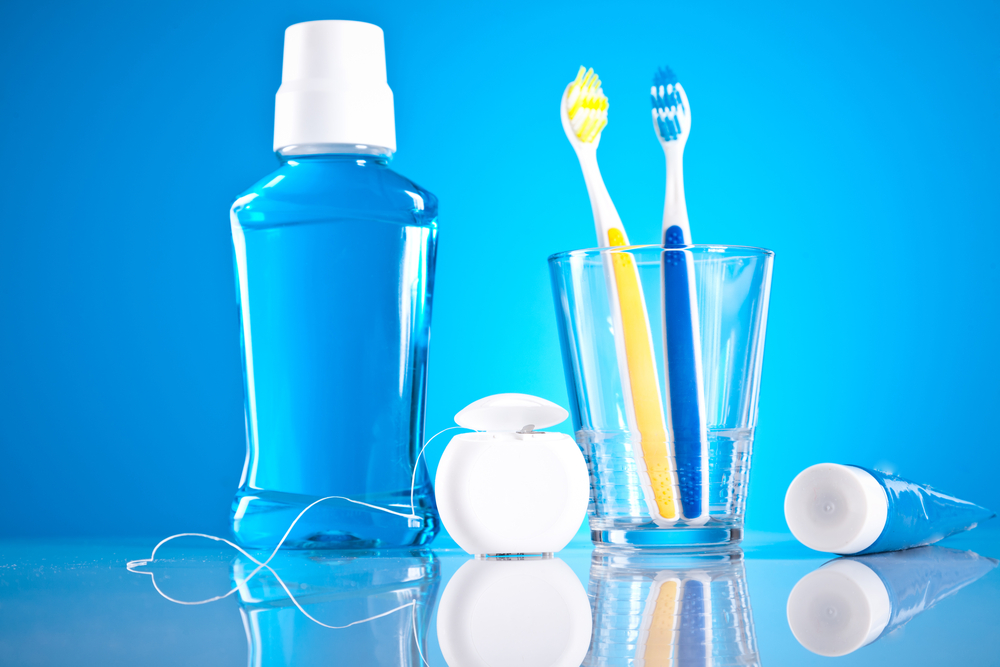
Toothbrushes
By now, you probably have heard about the debate between manual versus electric toothbrushes. Truth be told, both toothbrush types are effective in removing plaque and reducing gingivitis when used properly. Although manual toothbrushes are the more affordable option, you typically will not get a good cleaning and be more susceptible to damaging your gums. This is because manual toothbrushes effectiveness heavily reflects the effort you put into maintaining your oral health. So, if you decide to harshly brush your teeth so it takes a shorter time for brushing, you are actually causing more harm than good to your beautiful teeth. Not only are your teeth not getting a thorough clean due to missing some spots when rushing, but harshly brushing your teeth causes your enamel to wear quicker and damages your gums.
That is why, most dentists recommend their patients to use electric toothbrushes. Although electric toothbrushes are more expensive in comparison to manual toothbrushes, recent research has shown that electric toothbrushes are more effective when it comes to giving you a shiny smile. This is because the electric toothbrushes’ rotating brush head allows for more effective cleaning of hard-to-reach areas and prevents harsh brushing. In addition, their built-in timers allow for you to constantly brush your teeth the recommended two minutes every morning and night. Patients such as those with dexterity problems, disabilities, and/or braces may find that electric toothbrushes are easier to use.
Regardless of which toothbrush you used, make sure to replace them every 3 to 4 months or when the toothbrush’s bristles begin to have visible wear. This is to ensure that bacteria accumulation on the toothbrush is minimal and your toothbrush’s bristles are still effective to give you that beautiful smile.
Toothpaste
When it comes to your toothpaste, there is much more than choosing one with the minty flavor. Choosing a good, effective toothpaste requires consideration of the following ingredients: antibacterial, fluoride, detergent, and relative dentin abrasion.
Antibacterial prevents bacterial aggregation, slow multiplication, and release endotoxins. Antibacterials are able to prevent the buildup of plaque by inhibiting bacterial metabolic pathways.
Fluoride is another ingredient typically found in toothpaste. It serves an important role in strengthening and demineralizing your teeth enamel and protects the teeth against decay.
Detergent is a surface-active agent that loosens foods that get stuck on your teeth’s surface for your toothpaste to remove. The most common detergent found in toothpaste is sodium lauryl sulfate (SLS). The foaming agent allows for easy brushing in all areas of the mouth. However, patients who are allergic to SLS, have dry mouth or sensitive mouths should opt for a SLS free toothpaste.
Lastly, a criteria to consider would be the relative dentin abrasion (RDA) value. Abrasives contained in the toothpaste remove dental plaque and surface stains during toothbrushing. The American Dental Association recommends RDA values of 250 or less. However, RDA values from 101 and above are not recommended for daily use since its high abrasion can cause tooth sensitivity and tooth erosion. You might find that toothpaste with RDA values from 71 to 100 are a good fit since its medium abrasive allows for removal of plaque and bacteria from teeth without causing tooth sensitivity. For those with sensitive teeth or dental issues, you may want to use toothpaste RDA value from 0 to 70.
Mouthwash
In combination with your toothbrush and toothpaste, another key component in your dental hygiene regime is mouthwash. Other than giving you a minty fresh breath, mouthwashes have many benefits. The fluoride present in mouthwashes helps reduce tooth decay. While the alcohol in mouthwashes kills bacteria, which reduces gum inflammation and the antiseptic or anti-plaque ingredients prevent gum diseases. However, did you know that there are more than one type of mouthwash? The two types of mouthwashes are cosmetic and therapeutic. Cosmetic mouthwashes are your go to friend which can temporarily control bad breath and leave you a minty taste. Whereas therapeutic mouthwashes are your real friends that help reduce and control plaque, gingivitis, bad breath and tooth decay. Children under 6 years old should avoid using mouthwashes unless directed by their dentist since they can swallow large amounts inadvertently.
Regardless of your age, dental hygiene is incredibly important since you only get one pair of permanent teeth for the rest of your life. That is why it is crucial to choose and use the correct toothbrush, toothpaste, and mouthwash so that your smile can shine forever.
Welcome Smiles’ Favorites
At Welcome Smiles, the three most popular toothpastes amongst our staff are: Arm and Hammer dental care advance cleaning, Crest complete whitening with scope, and Colgate total clean mint. As for mouthwashes, our recommended mouthwashes are antiseptic Listerine with fluoride and ACT fluoride rinse. For our patients who are experiencing sensitivity, we recommend using the Sensodyne Pronamel mouth rinse. All of our favorite toothpastes and mouthwash have been carefully selected by our team to ensure the best care for your smile!
If you have any questions or concerns, we are here to help! Reach out to us at (508) 832-3205 or conveniently schedule an appointment through our website. Don’t forget to check out our engaging content on Instagram and Facebook by following us @WelcomeSmiles!
Tags: Home dental care education, Fluoride, General dentistry, Preventative dentistry
